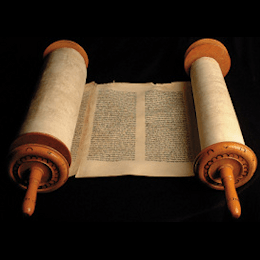Textus Receptus Bibles
Masoretic Text 1524
Old Testament
| 13:1 | ביום ההוא יהיה מקור נפתח לבית דויד ולישׁבי ירושׁלם לחטאת ולנדה׃ |
| 13:2 | והיה ביום ההוא נאם יהוה צבאות אכרית את שׁמות העצבים מן הארץ ולא יזכרו עוד וגם את הנביאים ואת רוח הטמאה אעביר מן הארץ׃ |
| 13:3 | והיה כי ינבא אישׁ עוד ואמרו אליו אביו ואמו ילדיו לא תחיה כי שׁקר דברת בשׁם יהוה ודקרהו אביהו ואמו ילדיו בהנבאו׃ |
| 13:4 | והיה ביום ההוא יבשׁו הנביאים אישׁ מחזינו בהנבאתו ולא ילבשׁו אדרת שׂער למען כחשׁ׃ |
| 13:5 | ואמר לא נביא אנכי אישׁ עבד אדמה אנכי כי אדם הקנני מנעורי׃ |
| 13:6 | ואמר אליו מה המכות האלה בין ידיך ואמר אשׁר הכיתי בית מאהבי׃ |
| 13:7 | חרב עורי על רעי ועל גבר עמיתי נאם יהוה צבאות הך את הרעה ותפוצין הצאן והשׁבתי ידי על הצערים׃ |
| 13:8 | והיה בכל הארץ נאם יהוה פי שׁנים בה יכרתו יגועו והשׁלשׁית יותר׃ |
| 13:9 | והבאתי את השׁלשׁית באשׁ וצרפתים כצרף את הכסף ובחנתים כבחן את הזהב הוא יקרא בשׁמי ואני אענה אתו אמרתי עמי הוא והוא יאמר יהוה אלהי׃ |

Masoretic Text 1524
The Hebrew text of the Old Testament is called the Masoretic Text because in its present form it is based upon the Masora—the Hebrew, textual tradition of the Jewish scholars known as the Masoretes (or Masorites). The Masoretes were rabbis who made it their special work to correct the faults that had crept into the text of the Old Testament during the Babylonian captivity, and to prevent, for the future, its being corrupted by any alteration. They first separated the apocryphal from the canonical books, and divided the latter into twenty-two books, being the number of letters in the Hebrew alphabet. Then they divided each book into sections and verses.
There is a great difference of opinion as to when the Masoretic Text was written, but it was probably accomplished in the 10th -11th century. Several editions existed, varying considerably, but the received and authoritative text is that of Jacob ben-chayim ibn Adonijah, who carefully sifted and arranged the previous works on the subject. It was published in 1524.